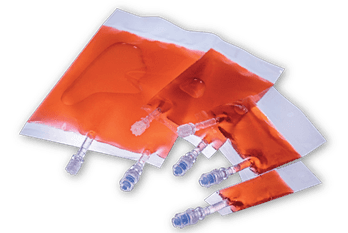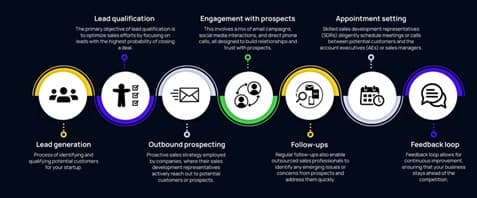Medical Devices & Consumables
Global Cell Culture Media Bags Market to Grow at 5.52% CAGR, Hitting USD 943.5 Million by 2031
05 June 2025

Global Market Outlook
According to APO Research, the global market for Cell Culture Media Bags is projected to grow from USD 651.2 million in 2024 to USD 943.5 million by 2031, with shipments reaching 14.19 million units. This growth is primarily driven by the increasing adoption of single-use bioprocessing systems in biologics, gene therapy, and cell-based applications.
Material Architecture and Manufacturing Process
Cell culture media bags are single‑use, flexible containment systems engineered to prepare, store, mix, and transfer liquid nutrient formulations that sustain in‑vitro growth of animal, insect, and microbial cells throughout research, clinical, and commercial bioprocessing workflows. They are manufactured from multilayer, medical‑grade polymer films produced by co‑extrusion or lamination; a typical architecture begins with an ultralow‑density polyethylene or ethylene‑vinyl acetate product‑contact layer that guarantees biocompatibility, low extractables, chemical inertness, and robust heat‑sealability. This is followed by adhesive tie layers bonding to a gas‑ and vapor‑barrier core—most commonly ethylene‑vinyl alcohol or polyamide—to minimize oxygen, carbon dioxide, and water‑vapor transmission, thus protecting pH and osmolality of sensitive basal or serum‑free media. Additional outer plies of linear low‑density polyethylene or cyclic olefin polymer impart mechanical strength, puncture resistance, and gamma, beta, or X‑ray sterilization stability, while optional EVOH/SiOx coatings, cyclo‑olefin layers, or fluoropolymer skins further suppress leachables and improve chemical compatibility with aggressive feeds or high‑osmolarity perfusion media.
The manufacturing process starts with pharmaceutical‑grade resin selection, melt filtration, and multilayer blown‑film or cast‑film extrusion under ISO‑class clean‑room conditions, followed by precise film slitting, pouch making on impulse or radio‑frequency welding machines, and integration of ports, tubing manifolds, and sterile connector assemblies. Bags are subsequently assembled in ISO 7 or ISO 5 environments, overpouched, and terminally sterilized—most often by 25–40 kGy gamma irradiation—yielding a sterile, ready‑to‑use container with validated sterility assurance level of 10⁻⁶. Modern designs embed RFID or 2‑D barcodes between outer plies for electronic batch traceability and incorporate in‑film optical windows to accommodate non‑invasive dissolved oxygen, pH, or conductivity patches for closed‑loop media conditioning.
Source: Saint-Gobain Life Sciences
Historical Development and Innovations
Historically, liquid media were stored in glass carboys or stainless‑steel vessels that required labor‑intensive cleaning and steam sterilization. The emergence of disposable bag technology in the mid‑1990s reduced facility turnaround time and cross‑batch contamination risk, accelerating regulatory acceptance within current Good Manufacturing Practice (cGMP) frameworks. Early products were limited to ≤20 L and suffered from brittleness at cold‑storage temperatures; material science advances introduced ultra‑flexible metallocene‑catalyzed PE and EVA contact layers, enabling cryogenic robustness to –19 °C in vapor‑phase liquid nitrogen. By the 2010s, suppliers offered 3‑D cubic and pillow‑style bags from 50 mL rocker‑bioreactor feed pouches to 2 000 L pre‑sterilized mixing vessels fitted with gassing ports, dip tubes, and bottom‑drain true‑flush valves. Recent development focuses on sustainable mono‑material polyethylene structures amenable to recycling streams, low‑extractable cyclic olefin films for gene‑therapy media free of antioxidant additives, and intelligent single‑use systems (iSUS) with integrated Bluetooth temperature loggers and real‑time location tracking.
Classification by Type, Volume, Temperature, Application
Classification can be made by geometry—2‑D flat, 3‑D cubic, or custom moulded; by volume—Below 1 L, these micro‑volume bags support cell‑line screening, early process‑development runs, and QC sampling. Typically, flat 2‑D pillow formats, they fit easily inside biosafety cabinets and can be frozen a –80 °C or held in LN₂ vapor without embrittlement. Integrated Luer sampling ports and 0.2 µm vent filters are common. 1 – 10 L, Bench‑scale media and buffer preparation for shake‑flask replacement, benchtop bioreactor feeds, or pre‑clinical gene‑therapy runs. Bags may incorporate mini magnetic or impeller mixers (5–20 rpm) for low‑shear homogenization and are welded to closed manifolds for aseptic transfers. Above 10 L, Large‑volume 3‑D cubic or drum‑liner bags scale to 50 L, 200 L, even 2 000 L for pilot through commercial production. They feature bottom drain valves, gassing ports, and in‑film pH/DO patches, delivering ≤30 s mixing uniformity and <10 ppm O₂ uptake. Seven‑layer films (ULDPE contact, EVOH/SiOx barrier, LLDPE or COP outer) withstand 25–40 kGy irradiation and are trending toward mono‑PE recyclable designs with RFID traceability; by temperature rating—ambient storage, cold‑chain (2–8 °C), freeze/thaw (–80 °C), or cryogenic (LN₂) models; and by application‑specific enhancements such as opaque UV‑blocking films for light‑sensitive media, antistatic laminates for powder‑to‑liquid reconstitution, or high‑pressure variants designed for pressurised hybrid single‑use/steel mixing tanks.
Bioprocess Applications and Regulatory Context
In practice, bags serve multiple roles: upstream, they hold basal media, feeds, and buffers that are sterile‑filtered directly into bioreactors through closed manifold systems, eliminating open handling; mid‑stream, they collect harvest pools, clarifier intermediates, or chromatography eluates; downstream, they store formulation buffers and bulk drug substance prior to aseptic filling. In cell‑and‑gene therapy, small 250 mL–5 L bags are used for autologous cell wash and transport, whereas vaccine and monoclonal antibody production may rely on 1 000 L bags integrated with magnetic, levitating, or impeller‑driven mixing systems delivering <10 ppm oxygen pick‑up and homogeneous osmolality within 30 seconds. Bag films undergo extensive biocompatibility testing per ISO 10993‑series, USP <87>/<88>, and extractable/leachable profiling under worst‑case temperature and solvent challenge following BPOG or USP 665 guidelines; qualified designs demonstrate <10 ppm total organic carbon leachables and no cytotoxicity to CHO, HEK293, or Vero cell lines over 14‑day incubation.
Market Size and Competitive Landscape
The global market for Cell Culture Media Bags has demonstrated strong resilience and consistent growth across both advanced and emerging economies, fueled by the increasing adoption of single-use bioprocessing technologies in biologics manufacturing, cell and gene therapy workflows, and personalized medicine platforms. Unlike broader categories of Single-Use Systems (SUS), this report focuses exclusively on Cell Culture Media Bags—defined as sterile, disposable polymer-based bag assemblies used for the preparation, storage, mixing, and transfer of media, buffers, or cells in upstream and downstream bioprocessing.
From 2020 to 2024, global Cell Culture Media Bag shipments increased from 8.44 million to 9.38 million units, corresponding to a revenue expansion from USD 555.2 million to USD 651.2 million, at a CAGR of 4.07%. The market is projected to accelerate between 2025 and 2031, reaching 14.19 million units and USD 943.5 million in revenue by 2031, with a CAGR of 6.33% and 5.52% respectively, driven by scale-up in biologics and advanced therapy manufacturing.
By Region, North America remains the largest market, accounting for 43.9% of global revenue in 2024, followed by Europe (28.1%) and Asia Pacific (24.0%). Asia Pacific is expected to experience the highest volume growth (6.46% CAGR) due to increasing investments in regional CDMOs, vaccine manufacturing capabilities, and local supplier development. South America and MEA represent smaller, yet emerging markets with growing public and private biopharma investments.
By Manufacturer, Thermo Fisher Scientific, Sartorius, Cytiva, and Merck KGaA together represent over 55% of global revenues in 2024. Chinese players including Guangzhou Jet, Lepure, Tofflon Science, and JYSS BIO have gained share through domestic bioproduction support programs and price competitiveness in the 1–10L and <1L bag segments. Takara, Saint-Gobain, OriGen, and Technoflex retain strong positions in niche and regional applications, while companies like Truking Technology and CEKG continue to expand from low-volume baselines.
- By Type, bags with a capacity of 1L–10L dominate both volume and revenue share in 2024, accounting for 59.9% of global unit shipments and 53.9% of revenue. This segment is widely used in seed train expansion, upstream culture steps, and intermediate mixing. Bags above 10L are primarily deployed in large-scale media storage and production-scale fed-batch cultures, growing at a CAGR of 6.92% through 2031. Conversely, below 1L bags are used in pilot, R&D, or autologous therapy workflows, with higher unit prices but lower total volume.
- By Application, Biopharmaceutical Production remains the dominant segment, representing 72.3% of global revenue in 2024. These bags are critical for the culture and expansion of CHO cells, recombinant protein expression, mAb production, and viral vector systems. Gene Therapy & Viral Vector Manufacturing and Tissue Engineering & Regenerative Medicine follow with 14.9% and 7.1% shares respectively, supported by clinical growth in CAR-T, NK cell platforms, and iPSC/MSC-based therapies. Emerging Applications such as organoid culture, 3D tissue scaffolds, and decentralized ATMP production, though still niche, are growing at a CAGR of 6.62% in volume.
Future Trends and Sustainability
The future trajectory of cell culture media bags is toward fully recyclable mono‑material PE films that maintain gas barrier via nano‑clay or EVOH‑coextrusion while meeting corporate sustainability goals, deployment of hybrid rigid‑flexible bag‑in‑box systems that combine stainless‑steel shells with disposable liners for high‑shear perfusion media blending, and digitalization through embedded sensors enabling predictive analytics for media shelf‑life and nutrient degradation. Continuous bioprocessing trends demand bags compatible with steady‑state perfusion at 30–37 °C for 60 days, pushing material fatigue resistance and lipid extractable limits. Regulatory agencies increasingly expect comprehensive extractables data and supply‑chain transparency, driving standardization of resins, sterilization processes, and change‑control protocols across suppliers. Overall, cell culture media bags have evolved into critical enabling technology that underpins flexible, rapid, and contamination‑free biomanufacturing from discovery labs to commercial multiproduct facilities.
*This report provides a dedicated and in-depth analysis of the Cell Culture Media Bags market, distinguishing it from the broader category of Single-Use Systems (SUS) used in biomanufacturing. It exclusively focuses on pre-sterilized, flexible, disposable polymer bag assemblies used for culturing, storing, transporting, or mixing cell culture media, buffers, and in-process biological materials. It excludes bioreactor vessels, single-use fermenters, and disposable mixing tanks unless they are directly classified as media bags by commercial nomenclature and usage.





